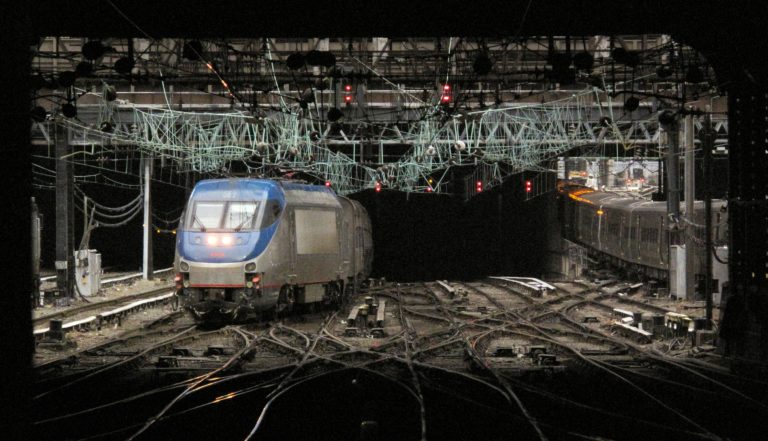Several members of New Jersey’s Congressional delegation accompanied Gov. Phil Murphy to tour the crumbling Hudson River rail tunnel Monday, marking the latest effort to put pressure on federal officials to end a funding impasse that has effectively derailed a $13 billion plan to build a new tunnel.
After witnessing the crumbling concrete and broken electrical cables inside the 108-year-old tube connecting New Jersey and New York, Murphy, a Democrat, called it an “existential” crisis for the northeastern U.S.
Democratic Sen. Cory Booker likened the congestion caused by the deteriorating tunnel to a person with clogged heart arteries.
“I’ve read about it, but seeing it is different,” said freshman Democratic Rep. Tom Malinowski. “You could see how little life is left in this tunnel and that we’re racing against time.”
Democratic New York Gov. Andrew Cuomo also toured the tunnel last fall and sent a video to President Donald Trump. Cuomo met with Trump and DOT Secretary Elaine Chao in late November in what he described as a productive session. But no funding agreement has been reached and final federal environmental approval, expected last spring or summer, has yet to be given.
Amtrak, which owns and operates the tunnel, has said that flooding from 2012’s Superstorm Sandy caused damage that could cause one or both of the tunnel tubes to fail in the next 10 to 15 years. One tube failing could reduce peak train service from 24 trains per hour to six, they have said. More than 400 trains carrying roughly 200,000 passengers pass through the tunnels each day.
Another storm wouldn’t necessarily cause the tunnel to collapse, Amtrak President Anthony Coscia said Monday. But it would increase the amount of maintenance required to keep it operating at peak capacity as it does now. Crews already work daily to shore up parts of the tunnel; increasing their work would require disruptions to train service.
“If we were to have another major storm, eventually what’s at risk is our ability to operate trains at the very heavy load that we operate today,” he said.
New Jersey and New York, along with the Port Authority of New York and New Jersey, have committed to fund half of the cost, partly using federal loans. Federal transportation officials have balked at committing to funding the other half of the project, and have said a 50-50 agreement reached during the Obama administration doesn’t exist.
They also have said the loans shouldn’t be considered state contributions because they originate with federal money.
Malinowski has proposed legislation that would ensure the loans would be considered the state’s contribution, and said he hoped to be able to attach that to a broader transportation bill.
The DOT didn’t immediately respond to a request for comment Monday.
(AP)











